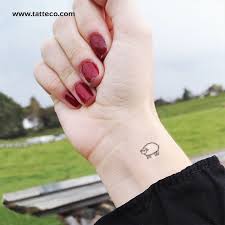


Sheep tattoos, like all animal tattoos, offer a unique blend of symbolism, artistry, and personal expression.
Sheep tattoos—who would have thought that these meek and mild creatures could inspire such intriguing body art? Yet, they do, and with good reason. When you think of sheep, you might picture serene pastures, rolling hills, and the soft bleating of a flock grazing under a wide sky. But there’s more to these animals than meets the eye. The symbolism behind sheep is rich, multifaceted, and deeply rooted in various cultures, making them an unexpectedly popular choice for tattoos.
In many cultures, sheep are seen as symbols of innocence, purity, and peace. Their gentle nature and pastoral life make them emblematic of calm and simplicity. A sheep tattoo might represent a return to innocence, a reminder of simpler times, or even a desire for peace in a chaotic world. But don’t be fooled—these tattoos aren’t just for the soft-hearted. They can carry a weight of meaning, depending on how they’re designed.
While sheep often symbolize gentleness, they can also represent conformity and the idea of following the crowd. But what if your sheep tattoo is a lone figure, standing apart from the flock? Suddenly, it becomes a statement about individuality, non-conformity, and the courage to stand alone. This duality makes sheep tattoos a compelling choice for those who want to convey a complex message.
When it comes to design, sheep tattoos are incredibly versatile. Some opt for hyper-realistic depictions, capturing the intricate details of the wool, the soulful eyes, and the landscape surrounding the sheep. Others might prefer a more whimsical approach—think cartoonish, stylized, or abstract representations that play with color and form. The design you choose can say as much about your personality as the sheep itself.
Sheep have appeared in mythology and folklore for centuries. In Greek mythology, the Golden Fleece was a symbol of authority and kingship. In Christianity, the lamb represents Christ as a sacrificial symbol. By getting a sheep tattoo, you could be tapping into these deep wells of cultural significance, adding layers of meaning to your body art.
Where you choose to place your sheep tattoo can dramatically alter its impact. A small, delicate sheep on the wrist or ankle might be a quiet, personal symbol, while a larger, more detailed design on the back or chest can make a bolder statement. The placement is key to how the tattoo is perceived—do you want it to be a subtle nod to your beliefs or a centerpiece of your body art?
Deciding on a sheep tattoo is just the first step. The process of getting inked is an experience in itself. From choosing the right artist to discussing your vision, to sitting through the tattooing process, there’s a journey involved. It’s not just about the final image on your skin; it’s about the story of how it got there.
You might be surprised to learn that sheep tattoos have made their way into pop culture. Celebrities and influencers have embraced this unique symbol, each bringing their own spin to the design. Whether it’s a minimalist outline or a detailed piece, sheep tattoos are quietly making their mark in the world of ink.
While sheep tattoos have their own appeal, they’re part of a broader trend—animal tattoos. From majestic lions to delicate butterflies, animal tattoos have become increasingly popular as people seek to express their connection with nature, their personality traits, or their spirit animals. The rise of animal tattoos speaks to a broader cultural movement toward individuality and personal expression.
Sheep tattoos, like all animal tattoos, offer a unique blend of symbolism, artistry, and personal expression. They’re more than just images on the skin—they’re stories, beliefs, and identities inked into flesh. Whether you’re drawn to the purity of the sheep, the wildness of the animal kingdom, or the intricate designs that combine the two, there’s something profoundly human about the urge to wear your spirit on your skin.
